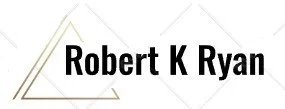Teaching Philosophy
“Education is not the filling of a pail, but the lighting of a fire.” W.B. Yeats
Award winning teams in Global Strategic Management Simulation Competition
I believe that W.B. Yeats captured the exhilaration of teaching when he wrote this. My goal is to ignite in learners a passion and ownership for their time and efforts at university and ultimately in their career. Although I spent over 24 years in formal educational studies, much of what I’ve absorbed in my profession has been though the experience of over 35 years in business leadership. I enjoy the educational transfer of this experience with students along with formal classroom subject material. Our students engage in experiential learning directly participate in concrete activities (e.g., case studies, group projects, guest speakers or simulated work experiences), and then have the opportunity to critically analyze and reflect on those experiences through class discussions or debates, individually written reflection exercises, or similarly insightful debriefing activities. The natural character of experiential learning allows for greater transferability and application of the lessons to other situations outside of the classroom.
I am constantly aware that in my position as an instructor I can have a profound positive or negative influence on the students’ learning experience. I continually monitor my behaviors and decisions via objective means (such as student evaluations and student performance) and subjective measures (such as informal discussions with students and peers). All of these mechanisms offer me opportunities to reflect and build self-awareness so that I can better contribute to a positive, balanced, and fundamentally beneficial classroom experience.
My intention is to bring an open mind, a positive attitude, and high expectations to the classroom each day. I believe that I owe it to my students, as well as the community, to bring consistency, diligence, a sense of justice, and warmth to my job in the hope that I can ultimately inspire and encourage such traits in the learner as well. The question I ask myself is, are they deep learning or engaging on the surface only? My approach to teaching is built on a model where student engagement and empowerment is the foundation. The Socratic approach using questions to stimulate critical thinking is essential in drawing out student ideas and underlying hypotheses. For engagement, I use formal and informal active and collaborative learning strategies in all of my courses and provide frequent opportunities for practice and feedback.
My objectives as a teacher are to have students understand the fundamental content of the course, develop critical thinking and problem-solving skills they can apply to the course content while reflecting on their own learning as the course progresses. I frequently encourage students to value an integrated view of business disciplines to reinforce the interdisciplinary requirements for executive decision making.
As I believe diversity is paramount to success in business, I also support and encourage diversity in the classroom. Opinions are enhanced creatively in the corporate environment as the class celebrates a wide range of perspective. The ability of students to take in a wide range of viewpoints brings empathy, creativity and resilience in decision making. I encourage lifelong learning extending past business subject matter to literature, art, science and cultural appreciation. Creativity, predicated on the integration of these, encompasses the ability to discover new and original ideas, connections, and solutions to problems. Students will take all this into the marketplace successfully.
In supporting a student’s desire to learn, I believe that teachers need to be firm, fair, and flexible: Firm, because some students need deadlines and strict assessment models to succeed; fair because it is a basic entitlement and because students are still immersed in a learning process; and flexible because life sometimes gets in the way, and students need to feel that their educational environment respects growth, maturity, and life events. When a student approaches me with a problem, I feel it is essential to give it a fair hearing and offer solutions and strategies that will allow him, her or they to handle their difficulties while also staying on track to complete the course.
I am confident that students learn best by example, which is why I believe that at the university level, teachers should be active in their discipline and communicate their expertise and enthusiasm for the material. I think that doing academic research, continuing education and experience is most deeply valuable to students and teachers. Setting examples means showing students that their professors have been and currently are invested in maintaining a high degree of awareness in their pursuits. My approach to teaching is my belief that it is my job not only to explain concepts and methods to students, but also to model the application of these ideas. I believe that modeling is a vital tool in helping students develop critical and abstract thinking skills, experience with analyzing and organizing data, and superior communication skills. Put simply, I believe in the philosophy of “do as I do”, rather than “do as I say”.
My teaching philosophy promotes complete learner exploration of the subject matter. This method relies on students taking an active role in their learning. For this reason, I strive to provide an environment that fosters trust and in which students have the confidence to share their ideas without fear of reprisal or rejection. As course instructor, I ideally act primarily as a facilitator, assisting students to achieve both the course learning objectives and their own individual learning goals. My ultimate teaching goal is to embolden student confidence in themselves as leaders and decision makers, which is the key to success in the business world.
“My contention is that creativity is now as important in education as literacy,
and we should treat it with the same status.”
~Sir Ken Robinson, speaking at the TED conference, Monterey, CA, 2006

